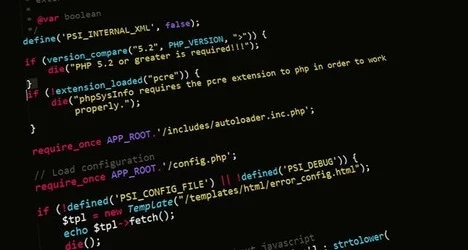
Generative AI, the ability of artificial intelligence systems to create content like text, visuals, and data-driven insights, is reshaping workforce collaboration. By automating workflows, enabling creative problem-solving, and facilitating communication, it empowers teams to achieve more together. Tools like ChatGPT, Microsoft Copilot, DALL·E, and others are already helping organizations enhance collaboration in meaningful ways.
Let’s dive deeper into how generative AI is revolutionizing various aspects of workforce collaboration.
Breaking Down Communication Barriers
Effective communication is essential for team collaboration, yet it’s often hampered by language differences, time constraints, and information overload. Generative AI addresses these challenges with precision.
Real-Time Summaries: Tools like Microsoft Copilot and Otter.ai analyze meeting transcripts and lengthy documents, summarizing key takeaways and action items. This ensures that everyone—whether they attended the meeting or not—has access to the most important points without sifting through pages of content.
Translation Capabilities: AI tools such as DeepL and ChatGPT enable multilingual teams to communicate seamlessly. For example, employees in different regions can collaborate on projects without worrying about language barriers, fostering inclusivity and productivity.
Actionable Insights from Communication: AI systems analyze team conversations to identify recurring challenges or areas requiring improvement. This can be particularly useful in cross-functional teams where miscommunication often arises.
By automating routine communication tasks, generative AI frees up employees to focus on strategic, high-value interactions.
READ: What Do Job Candidates Want from Potential Employers in the Age of AI?
Enhancing Remote and Hybrid Collaboration
The rise of remote and hybrid work environments has made collaboration more complex, requiring teams to rely on technology to stay connected. Generative AI excels in bridging these gaps.
Virtual Collaboration Spaces: Platforms like Slack GPT and Google Workspace with Duet AI provide intelligent integrations for brainstorming, project discussions, and content co-creation. AI-powered suggestions help refine ideas and streamline workflows in real-time.
Automated Scheduling: Tools like Calendly AI and Clockwise analyze availability across time zones and automatically propose optimal meeting times. This eliminates the back-and-forth emails often associated with scheduling.
Workload Optimization: AI ensures team members are neither overburdened nor underutilized. For instance, Asana AI can distribute tasks evenly across a team, balancing workloads based on individual bandwidth.
These tools ensure that remote and hybrid teams stay productive and connected, no matter where they’re working from.
Driving Creativity and Innovation
Creativity thrives on collaboration, and generative AI acts as a catalyst by enhancing brainstorming sessions and enabling the visualization of abstract ideas.
Idea Generation: Tools like Jasper AI and ChatGPT provide fresh perspectives on challenges, helping teams overcome creative blocks. For instance, marketing teams can use AI to brainstorm campaign ideas based on market trends or customer insights.
Rapid Prototyping: Visual content creation tools such as DALL·E and Canva AI allow teams to quickly draft mockups or visual concepts. This accelerates the feedback loop, enabling iterative improvements.
Scenario Testing: Generative AI models can simulate the outcomes of proposed strategies, helping teams make data-informed decisions. For example, a product team could test different market approaches using AI-generated scenarios.
Generative AI not only enhances creativity but also accelerates the innovation process by providing tools that complement human ingenuity.
Streamlining Project Management
Managing projects often involves juggling multiple tasks, timelines, and stakeholders. Generative AI simplifies this complexity by introducing automation and predictive capabilities.
Smart Task Management: Platforms like Monday.com AI and ClickUp AI automatically assign tasks based on team members’ expertise, availability, and workload. This ensures that projects progress smoothly without bottlenecks.
Progress Monitoring and Reporting: AI tools generate real-time dashboards that provide insights into project milestones, resource allocation, and deadlines. For instance, Smartsheet AI creates visual timelines to help teams stay on track.
Proactive Risk Management: Generative AI identifies potential risks in projects, such as resource shortages or delays, and suggests solutions. Teams can act on these insights to avoid setbacks.
By automating routine project management tasks, generative AI empowers teams to focus on delivering impactful results.
WATCH: All Access: Low Code Automation to learn more about citizen development and tools like Notion AI
Encouraging Knowledge Sharing
Knowledge is one of the most valuable assets in any organization. Generative AI ensures that this knowledge is accessible, organized, and actionable.
Centralized Knowledge Hubs: AI tools like Notion AI and Confluence AI organize and tag information, creating searchable repositories for team documents, policies, and best practices.
Dynamic Training Programs: AI-powered platforms such as Udemy Business AI create personalized learning paths tailored to employees’ roles and development goals. This ensures that knowledge-sharing initiatives are relevant and effective.
Instant Support: Chatbots powered by generative AI, like those integrated into Zendesk AI, provide real-time answers to employee questions. Whether it’s about company policies or technical troubleshooting, these tools ensure that knowledge is just a query away.
Generative AI fosters a culture of continuous learning and collaboration, where employees can easily access and share knowledge.
Building Inclusive Collaboration
Inclusivity is a vital component of effective teamwork. Generative AI enhances inclusivity by ensuring equal participation and accessibility for all employees.
Accessible Tools: Features like speech-to-text (found in Otter.ai) and real-time subtitles enable employees with hearing impairments to participate fully in meetings and discussions.
Unbiased Contributions: AI-powered platforms like Textio analyze language for inclusivity, ensuring that team communications are free from biased language or stereotypes.
Feedback Analysis: Generative AI tools analyze employee surveys and team feedback to identify areas for improvement in collaboration dynamics, ensuring that no voices are overlooked.
By creating an environment where every employee feels valued and included, generative AI strengthens team cohesion and collaboration.
Challenges and Ethical Considerations
Despite its many benefits, generative AI also introduces challenges that must be carefully managed:
Data Privacy: Organizations must safeguard sensitive employee data used by AI tools to ensure compliance with privacy regulations.
Bias in AI Outputs: Generative AI models must be trained and monitored to minimize bias, which can inadvertently impact collaboration efforts.
Balancing Automation with Human Oversight: While AI can automate many tasks, human judgment remains critical in decision-making and maintaining team dynamics.
Addressing these challenges proactively will help organizations harness the full potential of generative AI responsibly.
Conclusion
Generative AI is transforming workforce collaboration by improving communication, fostering creativity, and streamlining workflows. Tools like ChatGPT, DALL·E, and Slack GPT empower teams to work smarter, bridging gaps in remote and hybrid work environments while driving innovation and inclusivity. As organizations integrate these tools into their operations, the focus must remain on using AI to complement human capabilities—not replace them. With thoughtful implementation, generative AI holds the potential to redefine how we collaborate and achieve success in the modern workplace.
Join the global human resources online community

Join HR Exchange Network today and interact with a vibrant network of professionals, keeping up to date with the industry by accessing our wealth of articles, videos, live conferences and more.
Join Now
















